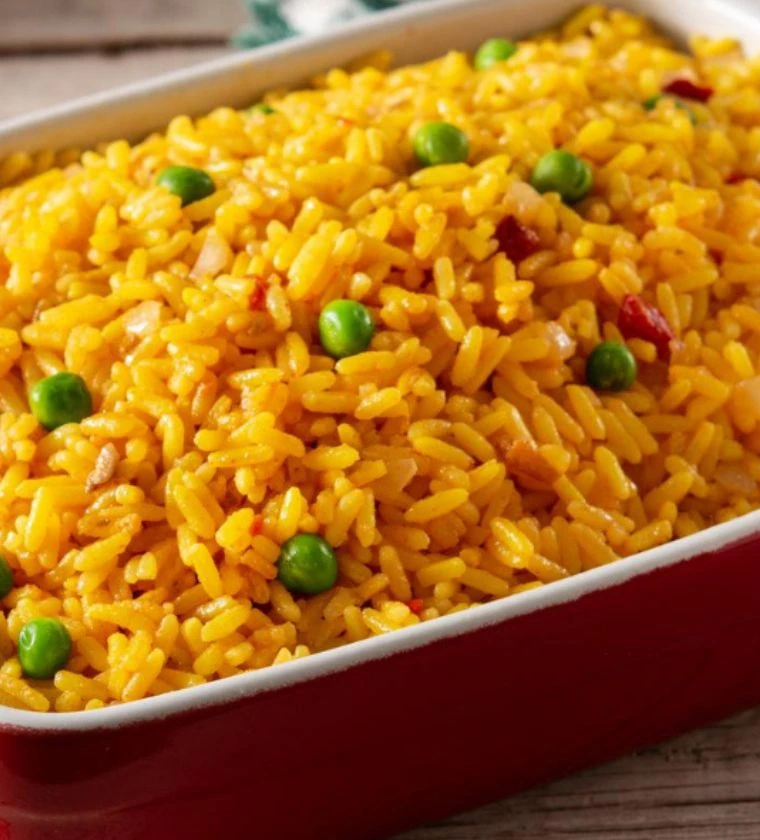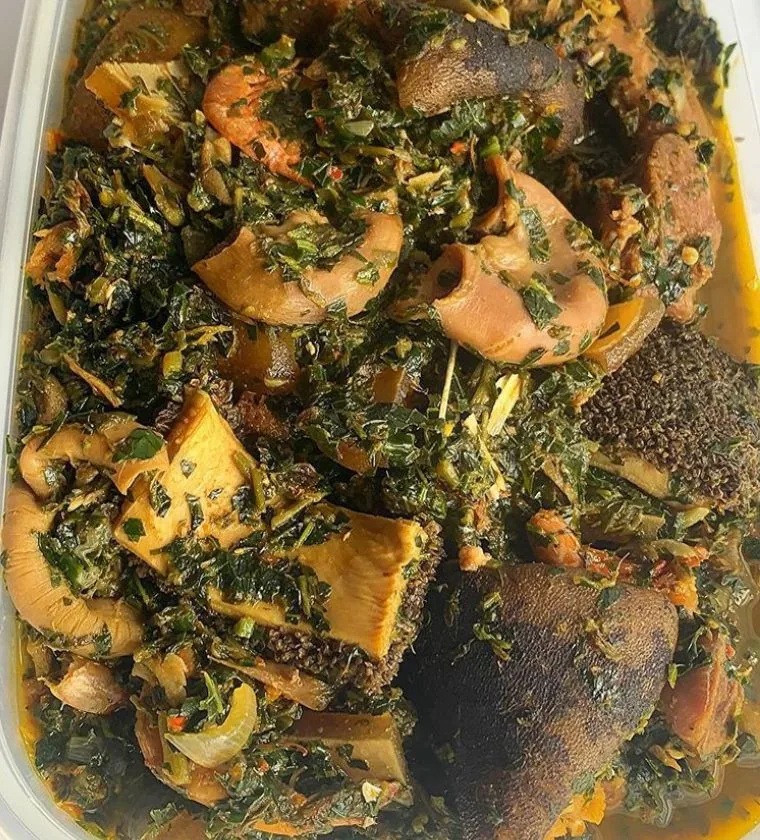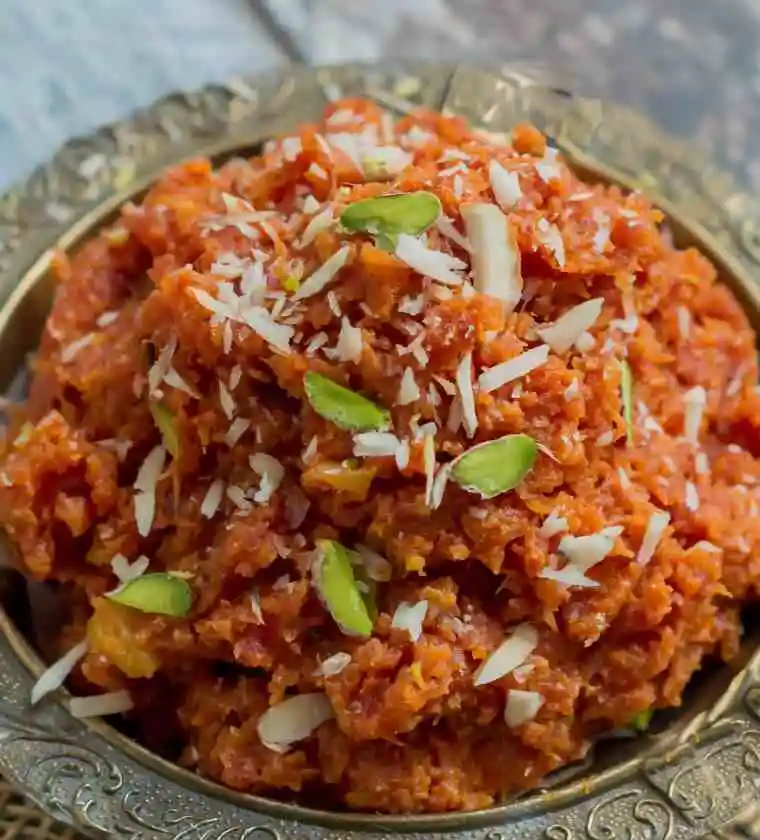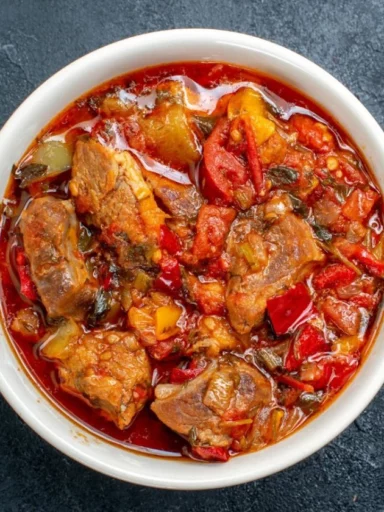How to Make Vegetable Biryani Recipe
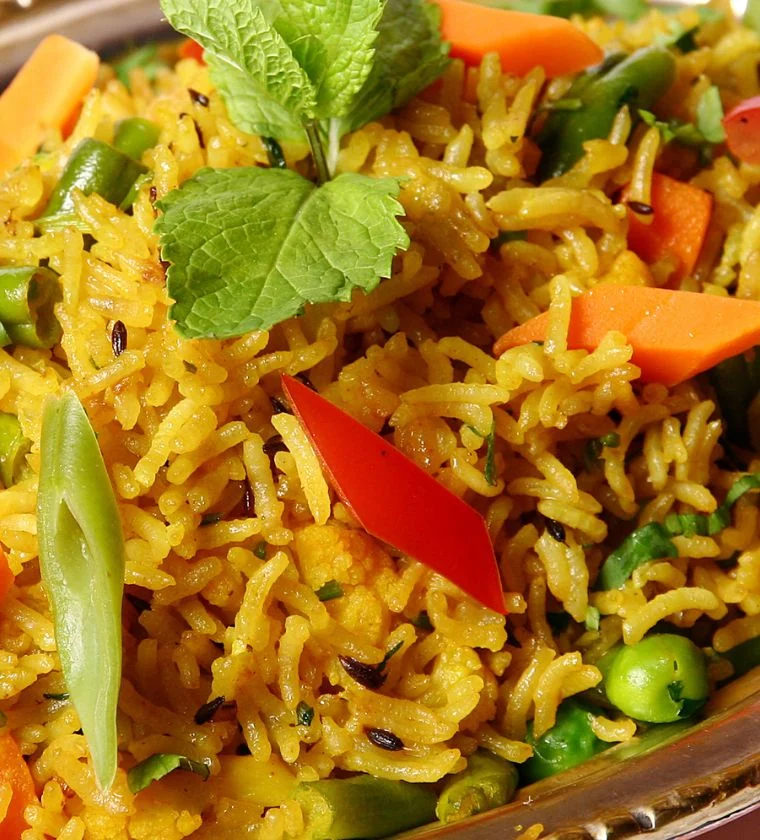

How to Make Vegetable Biryani Recipe
Description
Prepare to embark on a culinary adventure as we unveil the art of crafting vegetable biryani, a dish steeped in history and tradition. With Mughal origins, this recipe is a captivating fusion of aromatic basmati rice, caramelized onions, and an array of fresh, colorful vegetables. The magical combination of fragrant spices and saffron creates a tantalizing, sweet-savory melody that will leave your taste buds enchanted.
Experience the complete symphony of flavors in every delightful bite. Dive into the world of vegetable biryani, a culinary masterpiece that beckons you to savor its exquisite taste.
Ingredients
Ingredients for Making Vegetable Biryani
Ingredients for the curry or gravy
Saffron milk
Garnish
Instructions
Procedures for Making Vegetable Biryani
-
Rinse the basmati rice and soak it for about 30 or 50 minutes. Get the onion peeled and rinsed, then slice thinly and make sure the layers are separated.
-
Peel potatoes and chop them before placing the chopped potatoes into a bowl of water. Next, get ginger and garlic, peel, and make into a paste.
-
Get the carrots peeled and the cauliflower should be chopped into slightly large pieces. Chop your beans, mint leaves, and coriander leaves, and make sure to rinse them all separately.
-
Whisk yogurt, heat ¼ cup of milk in a saucepan, add a pinch of the saffron strand, ½ tablespoon of rosewater, and keep aside.
-
Pour ghee into a deep pan; after it melts, add cashews and fry until it turns a light golden color. Raisins should be added next and until they swell up, keep on frying, then add some sliced onions and fry for a few minutes on medium heat before placing them on a plate.
-
Get a pot and boil 7 cups of water. Add a teaspoon of salt, vegetable oil, 2 green cardamoms, 1 tablespoon of lemon juice, 2 cloves, ½ teaspoon of black cumin, 1 pinch of cinnamon, and 1 bay leaf.
-
After the water comes to a rapid boil, strain and add the soaked rice, and cook on high heat. Rice should be slightly undercooked, then drained using a colander.
-
Thinly sliced onions should be placed in a hot pan with oil for about 7 minutes and allowed to caramelize on low heat. After turning a golden color, place it on a different plate.
Vegetable Biryani Gravy
-
Add spices, 4 cardamoms, 1 bay leaf, 1-star anise, 1-inch cinnamon, 4 cloves, and 1 teaspoon black cumin into a pan, on low heat to avoid easily burning.
-
The next is to add ginger and garlic paste until slightly aromatic. Add chopped potatoes, then carrots, cauliflower, green chili, and green peas. Saute for 3 minutes.
-
Add ¼ cups of water into the same pan, mix, cover the lid, and cook on medium heat until potatoes are tender, not overly cooked.
-
Add a teaspoon of red chili powder, ½ teaspoon salt, 2 teaspoons garam masala, and ½ teaspoon turmeric powder and stir for about 2 minutes. Reduce the heat, and add 2 tablespoons of water and a cup of whisked yogurt.
-
Mix, cover the lid, and cook for 4 minutes. Next, add ¾ of the fried onions, 2 tablespoons of mint leaves, and 2 tablespoons of coriander leaves before turning off the heat.
-
Layer the hot rice over the gravy or curry, add rosewater and saffron-infused milk, remaining fried onions, and mint leaves. By sprinkling, add nuts and raisins. Save some nuts and raise them for garnishing.
-
Seal the pot with aluminum foil paper. Place the pot over a direct flame on low heat for 12 minutes, after which it should be allowed to settle for 20 minutes.
-
To serve vegetable biryani, gently fluff the rice and vegetable layers with a fork, ensuring an even distribution of flavors. Garnish with fresh cilantro, fried onions, and a squeeze of lemon juice for a burst of freshness.
Note
Tips:
- If rice is soaked for about an hour, it is alright to let it cook for about 3 minutes only.
- Rice needs to be hot when layering. Use fresh vegetables for your vegetable biryani.
- Aged basmati is considered the best rice to use for vegetable biryani.
- While frying onions, they can be fried for 5 minutes on medium heat, 3 minutes on low heat, and 2 minutes with the stove turned off.
- It is advisable to use a flat serving spoon when serving vegetable biryani, so everyone can have a serving of both the rice and gravy.
Occasions to Serve Vegetable Biryani Best
It can be served at festive celebrations like Diwali or Eid, as well as at casual gatherings, family dinners, or special occasions, making it a popular choice for both formal and informal events.
How to Store Vegetable Biryani
Vegetable biryani can last for 3 days when refrigerated. It should not be left to sit at room temperature for more than an hour. It can also be frozen for sometimes
Health Benefits of Vegetable Biryani
Vegetable biryani contains a lot of health benefits apart from its sweetness; it has a low glycemic index, aids digestion, is rich in antioxidants, and reduces allergen risk. And many more.
Conclusion
In conclusion, crafting vegetable biryani is not just a culinary endeavor but a journey through time, flavors, and traditions. The harmonious marriage of fragrant spices, tender vegetables, and aromatic rice creates a symphony for the senses. With each bite, you'll savor the rich history and intricate layers of this delightful dish. Don't miss the chance to experience the magic of vegetable biryani, a flavorful masterpiece that awaits your exploration. Give it a try, and let your taste buds be mesmerized by this extraordinary feast!
You could also check out how to make catfish pepper soup, and Chicken Stew.
Frequently Asked Questions
Salt is the most important taste enhancer in any food. If your rice lacks salt, biryani will lack completely in flavor. To know whether the salt is enough in water for boiling rice, taste the water, it should have a soupy salt level.
Biryani is known for its aroma and flavor. Fresh herbs, saffron, and basmati rice give it a sweet-floral aroma that hits the nose before you taste it. Whole garam masala, fried onions, and marinated meat provide warmth and subtle heat to the dish. Overall, it tastes like a savory, spiced rice pilaf.
A flavorful vegetable curry made with potatoes, peas, and carrots is a great side dish to serve with biryani. The vegetables in the curry complement the flavors of the biryani, and they add a variety of textures and flavors to the meal.
2 teaspoons ground cumin.
2 teaspoons ground coriander.
2 teaspoons ground turmeric.
1 teaspoon ground ginger.
1 teaspoon ground cinnamon.
1 teaspoon freshly ground pepper.
1 teaspoon freshly ground nutmeg.
1 teaspoon ground cardamom.
Biryani Vs Pulao: The differentiating factors
So, yes – both are available in the vegetarian and non-vegetarian variants, against the widespread opinion that 'pulao' refers to the vegetarian and 'biryani' indicates the non-vegetarian version of the same dish.




